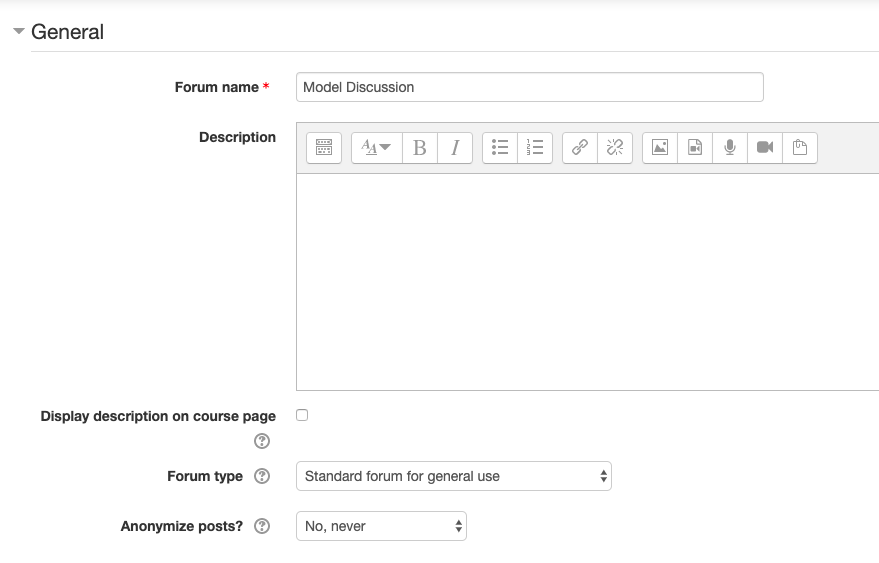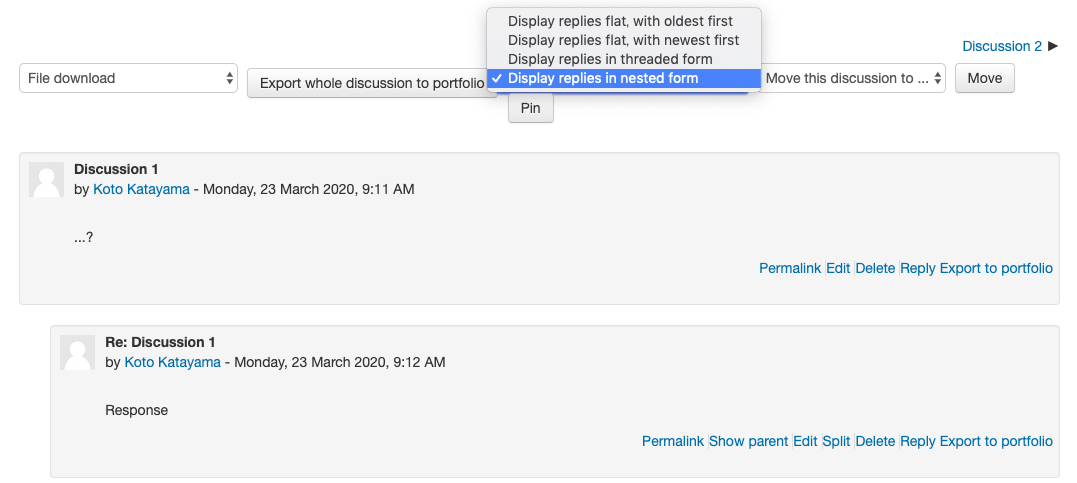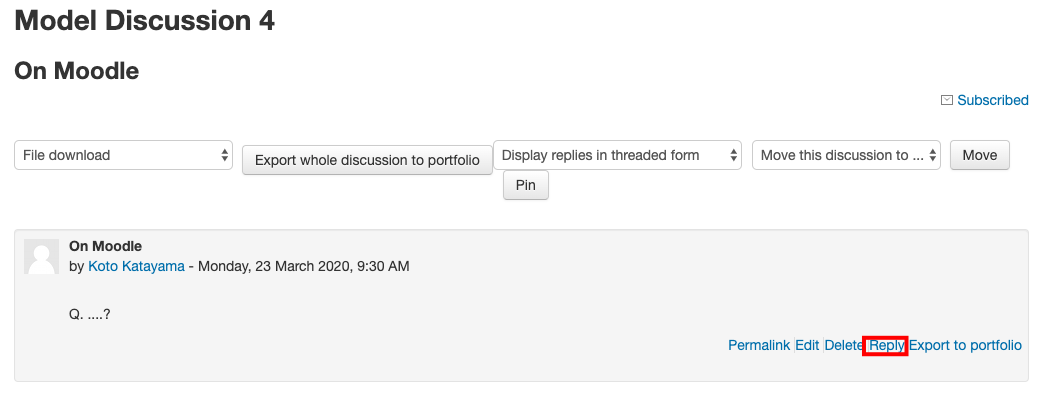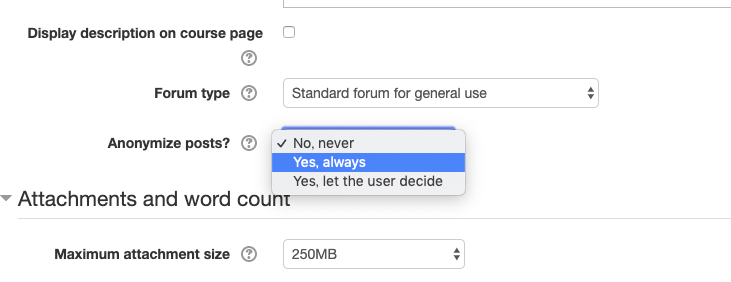This page provides descriptions and screenshots of the types of forums that are available on Moodle.
Creating a forum
To create a new forum, go to the course page, and select Add Activities and Resources on the class week of your choice. Click on Forum in the menu bar. 
Standard Forum for General Use
A standard forum for general use first shows a homepage that contains a list with links to each post. Each post cannot be read without clicking on the link to that discussion, but some information about each post is visible, including how many replies there are and when the last post on the discussion was.
You can choose this option at the Forum Type dropdown column.


If you click through to a post by clicking on the blue discussion topic, a page will appear with the full original post, along with any comments on the post.
There is also a drop-down menu with options for how to display the posts. "Display replies in nested form" shows the original post first, with any comments indented underneath and in chronological order.

The option “Display replies in threaded form” shows only the original post, requiring you to click on any replies, which appear as links below.

The options Display replies flat, with oldest first and Display replies flat, with newest first look similar to nested form, but without the indent, and the replies can be ordered by how recently they were posted.
A possible benefit to the Standard Forum for General Use is the homepage: each topic is separate and in an easy list. The full text of the post is not displayed on the list, so if the students were to be writing long posts and responses, they would not all be displayed on the home page, and all the ideas would stay separate and organized.
Standard Forum, Blog-like Format
The standard forum with a blog-like format also has a homepage, which lists all the posts with the newest first. However, this homepage displays the text from the posts, so that all the posts can be read at once. The responses will not be displayed unless you click through to “Discuss this topic,” where any forum member can add comments.
You can choose this option through the discussion setting at the Forum Type dropdown.

Clicking “Discuss this topic” brings you to a post page identical to that of a standard discussion, with the same options for organizing the page.

The benefit to the Standard Format, Blog-like Format is that all of the blog posts are visible. If you are requiring students to all post, or to read all the posts, this is an easy way to see (and print) all the posts at once, especially if replying to posts is not a priority.
A single simple discussion
A single simple discussion functions like an individual forum post. The link on the class page takes you directly to the discussion.

This format would work well if you had a question or topic that you wanted students to discuss. They could only reply to your discussion topic, so all their replies would show up on one page.
Q&A Forum
The Q & A forum format works well if you have a topic that you want students to discuss, but you do not want them to be influenced by each other in their answers. Although the professor would be able to see all the posts right away, the students would not be able to see anything until they had posted themselves. The Q and A has a homepage, which lists all the discussion questions.

The discussion page for Q and A forms is a bit more complicated than for the other formats. A professor must post the original question, and then students can begin commenting. A unique feature of this format is that the students will not be able to see any other responses until they have already posted.
On first looking at the forum, a student will only see the professor's opening question. Other students' replies will appear with this message:
Subject (hidden)
Author (hidden)
This post cannot be viewed by you, probably because you have not posted in the discussion, the maximum editing time hasn't passed yet, the discussion has not started or the discussion has expired.
A student can see the other posts only after they reply to the topic and the 30-minute window during which they can edit their post ends. (You as the professor can see all posts as they come in.) This is a good way to ensure that each student posts their own individual thoughts on the topic; it blunts the ability of the first respondents to set the tone of the whole discussion.
Anonymous Forums
Any forum can be made anonymous, meaning that all posts (including yours) will be attributed to an "Anonymous User."
You can anonymize posts at the discussion setting page.
An anonymous forum has all the pros and cons of anything involving anonymity: the students may feel more comfortable posting, but the forum could also be used maliciously. There is no way to switch the posts from the Anonymous User to the actual author's account, so this would not be a good format for assignments in which you need to know who has posted. (It is possible, but cumbersome, for the professor to go through the course logs and see who posted when, so it is also not a perfectly anonymous system.)